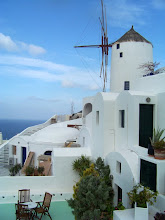
I just finished reading this fascinating book about the architecture in Hitchcock's films. The book gives in-depth discussions on Hitchcock’s unique way of set design and filming techniques based on his profound understanding of space and visual way of thinking. The first two parts of the book focus on an overall account of Hitchcock’s set design, conspicuous architectural motifs, his interests in tourism and so forth. The third part provides detailed analysis of 26 houses from 22 Hitchcock films. Drawings including floor plans, sections and site plans were presented to facilitate the understanding of architectural space.
In order to gain full control of a scene, Hitchcock preferred set shooting over location shooting all his life. From the book, I discovered that some of the most memorable shots were actually made from matte paintings or miniature models. For instance, in Rebecca all the exterior shots of the mansion Manderley were made from different-sized miniatures combined with studio effects, while all the rooms were studio sets. In Vertigo, the tower where the two deaths happen was set up solely for the film. The bird’s-eye view of the tower was just a matte painting. I was amazed at how well those special effects fooled the eyes of contemporary viewers considering some were made 70 years ago.
The chapter on Hitchcock’s preference in domestic setting is also intriguing. The typical Hitchcockian horror exists in a hidden dimension, a horrific dimension underlying our most familiar environments, especially houses. Many of the most terrifying scenes happen in either a house or a motel room, which is best exemplified in Psycho and The Birds. However, Hitchcock did sometimes take strong interests in the tourist gaze. Quite a few dramatic scenes were shot at national monuments such as Mt. Rushmore in North by Northwest and Statue of Liberty in Saboteur. The landmarks shown in Vertigo also make San Francisco even more irresistible to fans like me - I visited most filmming locations of Vertigo the first time I was in San Francisco.
As discussed in the book, the objects in Hitchcock’s films are “never mere props”, but “the very substance of his cinema”. The objects often associate with symbolic meanings, link with tensions and terrors, or even seem alive. Many of these objects are architectural elements, such as a door, a window or a staircase, which have formed some famous Hitchcockian motifs. After reading the insightful analysis on many key objects, I came to realize how many visual details I’ve overlooked during previous viewings. I will go back to those films again for new discoveries.
In short, this book offers a comprehensive examination on architecture’s role in Hitchcock’s films. Despite its theoretical quality, the book is graphically alluring by blending original frames, behind-the-scene photos and architectural drawings. The author also wittily rephrased some Hitchcock’s film names into his key titles, from the book title to some of the chapter names. If you are a Hitchcock fan, you are gonna love this book!
In order to gain full control of a scene, Hitchcock preferred set shooting over location shooting all his life. From the book, I discovered that some of the most memorable shots were actually made from matte paintings or miniature models. For instance, in Rebecca all the exterior shots of the mansion Manderley were made from different-sized miniatures combined with studio effects, while all the rooms were studio sets. In Vertigo, the tower where the two deaths happen was set up solely for the film. The bird’s-eye view of the tower was just a matte painting. I was amazed at how well those special effects fooled the eyes of contemporary viewers considering some were made 70 years ago.
The chapter on Hitchcock’s preference in domestic setting is also intriguing. The typical Hitchcockian horror exists in a hidden dimension, a horrific dimension underlying our most familiar environments, especially houses. Many of the most terrifying scenes happen in either a house or a motel room, which is best exemplified in Psycho and The Birds. However, Hitchcock did sometimes take strong interests in the tourist gaze. Quite a few dramatic scenes were shot at national monuments such as Mt. Rushmore in North by Northwest and Statue of Liberty in Saboteur. The landmarks shown in Vertigo also make San Francisco even more irresistible to fans like me - I visited most filmming locations of Vertigo the first time I was in San Francisco.
As discussed in the book, the objects in Hitchcock’s films are “never mere props”, but “the very substance of his cinema”. The objects often associate with symbolic meanings, link with tensions and terrors, or even seem alive. Many of these objects are architectural elements, such as a door, a window or a staircase, which have formed some famous Hitchcockian motifs. After reading the insightful analysis on many key objects, I came to realize how many visual details I’ve overlooked during previous viewings. I will go back to those films again for new discoveries.
In short, this book offers a comprehensive examination on architecture’s role in Hitchcock’s films. Despite its theoretical quality, the book is graphically alluring by blending original frames, behind-the-scene photos and architectural drawings. The author also wittily rephrased some Hitchcock’s film names into his key titles, from the book title to some of the chapter names. If you are a Hitchcock fan, you are gonna love this book!

No comments:
Post a Comment